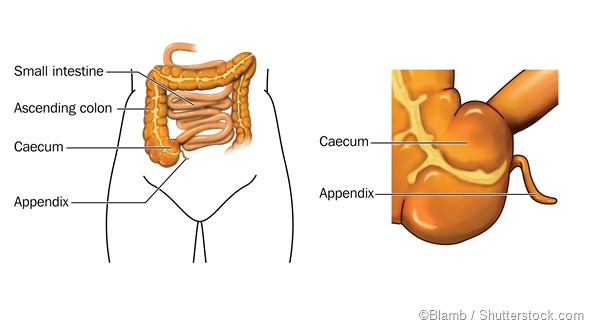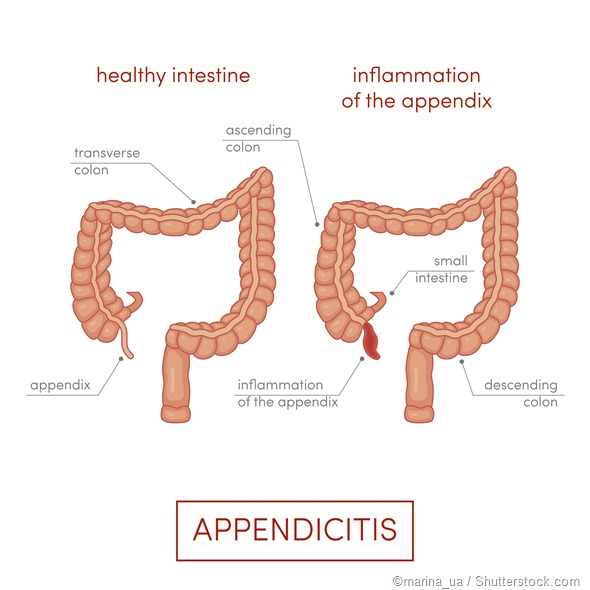The appendix or vermiform appendix is a muscular structure attached to the large intestine in the human body. It is a narrow tube resembling a worm and is named after the Latin word "vermiform" which means ‘worm-shaped’. The appendix extends from the lower end of the cecum, a pouch-like structure in the large intestine.
The diameter of the appendix usually ranges from 7 to 8 mm and its length ranges between 2 and 20 cm, with an average length of 9 cm. The appendix is usually located at the lower right side of the abdomen. In people with a rare condition called situs inversus, it can be found at the lower left quadrant of the abdomen. The appendix is made of inner mucosa layer just like the rest of the digestive tract and is also known as the vermix or the cecal appendix.

Function in Humans
The function of the vermiform appendix in the human body is not fully established yet. Scientists believe that it is a vestigial remnant, that is, it was once useful to humans in the digestion of food, but as we have evolved, it has lost its function and become redundant. Some research studies show that the appendix is rich in lymphoid cells, which help the body fight infections, and hence it could have a role in the body’s immune functions.
Appendicitis
The inflammation of the appendix is called appendicitis. It is caused by the blockage of the appendix and is very painful and potentially fatal. Appendicitis is the top most cause of acute abdominal pain necessitating surgery in the United States, affecting more than 5% of the population at some point of time.

Indigestible food passes from the small intestine to the large intestine and into the appendix. The muscular walls of the appendix contract and expel this food. When there is a blockage at the point where the appendix and large intestine meet, it can cause the inflammation of the appendix. This can lead to severe abdominal pain, nausea, fever and vomiting. Symptoms of appendicitis can vary in different people. If left untreated, a clogged appendix can rupture and release harmful bacteria into the abdomen eventually causing peritonitis.
Mild appendicitis can be treated using antibiotics. Severe cases are usually treated by surgically removing the appendix. This procedure is called appendectomy and can be performed either by laparotomy in which a single incision is made in the right lower portion of the abdomen to remove the appendix or laparoscopic surgery which is carried out by making many small incisions through which special tools are inserted to remove the appendix.
Doctors often remove a healthy appendix while performing other abdominal surgeries like a hysterectomy. This is to avoid appendicitis in the future, as the appendix is prone to bacterial infections.
Summary
The human vermiform appendix is not considered as a vital organ with a significant function. The use of the appendix in the human body is still a subject of debate among medical researchers and scientists. While some theories suggest that it is an evolutionary remnant of a cecum that was once large and had vital digestive functions, which don’t work the same way anymore, others hint that the appendix stores good bacteria which can fight off infections.
Although some scientists believe that the human appendix has useful functions in the body, they still recommend the removal of the diseased appendix, as appendicitis or appendix cancer when left untreated, can be fatal and also because the removal of the appendix is not seen to cause any ill effects in the human body.
References
Further Reading